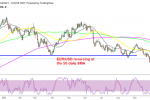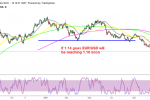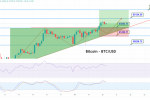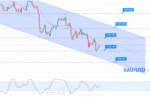CRUDE OIL, US DOLLAR, OPEC+,OMICRON, WHO, WTI – TALKING POINTS
CRUDE OIL fell over 13% on Friday after the World Health Organisation (WHO) verified a new strain of Covid-19 that has been named “Omicron”. WTI rallied 5% in Asian trade as more information is slowly coming to light.
Early anecdotal reports out of southern parts of Africa; are that the strain could be more contagious than previous variants, but that the impact on health may not be as severe. This is yet to be officially confirmed, but it has been enough to pause negative sentiment for now.
After crude made a multi-year high in October, a number of countries; looked to their strategic reserve stockpiles as a way to alleviate increasing energy costs. Once the dust has settled and there is clarity around the consequences of Omicron, these reserves may not be needed.
On the other side of the coin, OPEC+ meet on Thursday to discuss the possibility; of lowering output to counter the release of oil by US-led major governments. If fiscal; authorities are re-thinking their position, OPEC+ may not need to change their current stance.
The risk-off event on Friday saw a dramatic spike in volatility across many asset classes.
With so much uncertainty around the impacts of Omicron, markets are probably going to; remain on edge and fresh news might trigger further volatility.RECOMMENDED BY DANIEL MCCARTHYHow to Trade OilGet My Guide
CRUDE OIL TECHNICAL ANALYSIS
CRUDE OIL, Crude oil recently broke down through previous support at 74.76 and 73.14. These levels may now offer resistance. Further resistance might be at the prior highs of 79.33, 81.81, 84.97 or 85.41.
The short-term 10- and 21-day simple moving averages; (SMA) have a negative slope that has accelerated with the move down. However, the medium and long-term SMAs of 55, 100, 200 and 260 days maintain a positive gradient. This may indicate that short-term momentum is bearish, but that longer term momentum possibly remains bullish.
CRUDE OIL, The price moved below the lower band of the 21-day SMA based Bollinger Band but a close back inside this band might signal a pause in bearishness. The increase in volatility can be observed in the width of the Bollinger Bands.
Support could be at the previous lows of 67.12 and 61.74; or the 260-day SMA, currently at 65.17.







